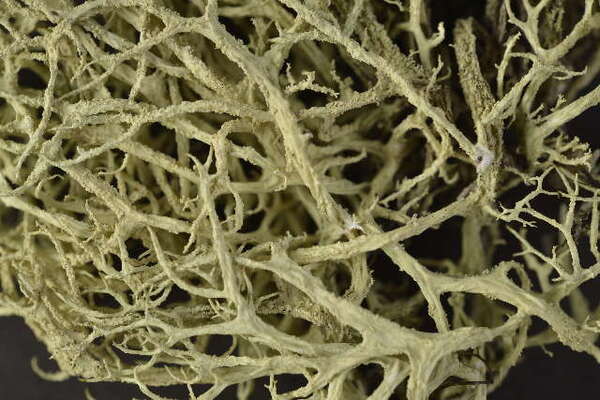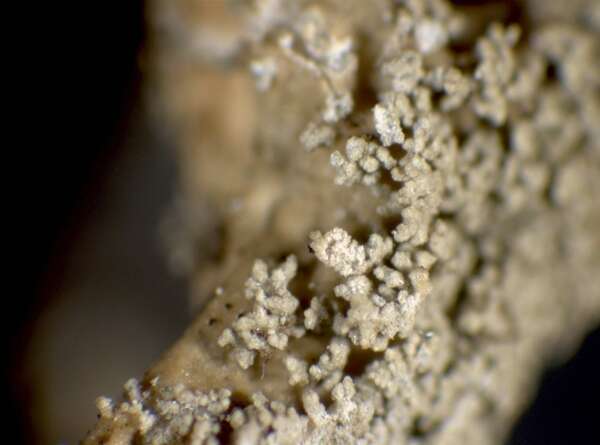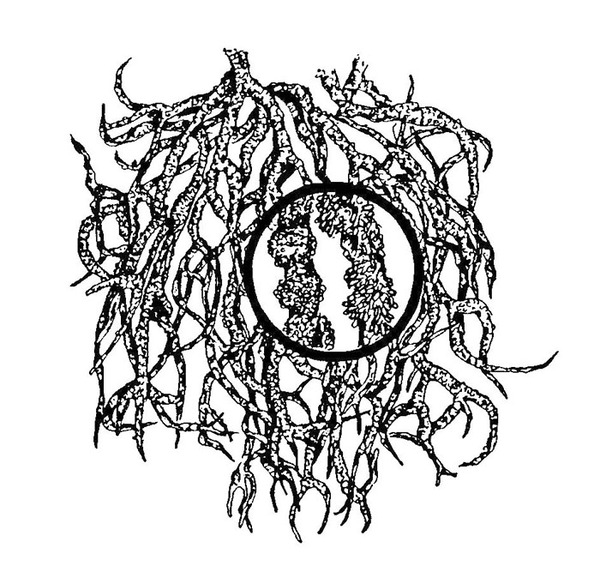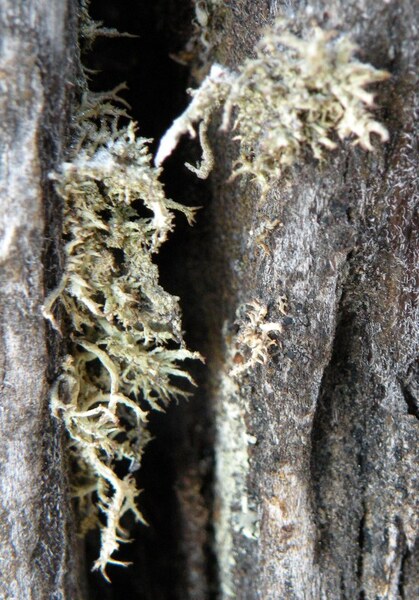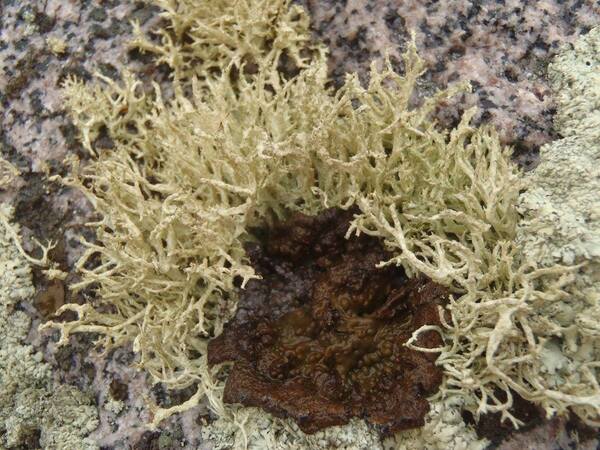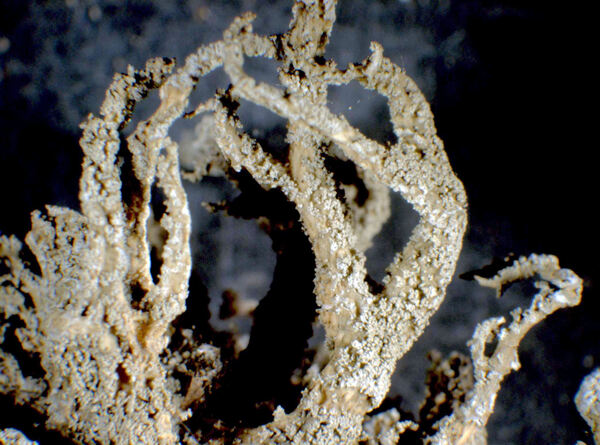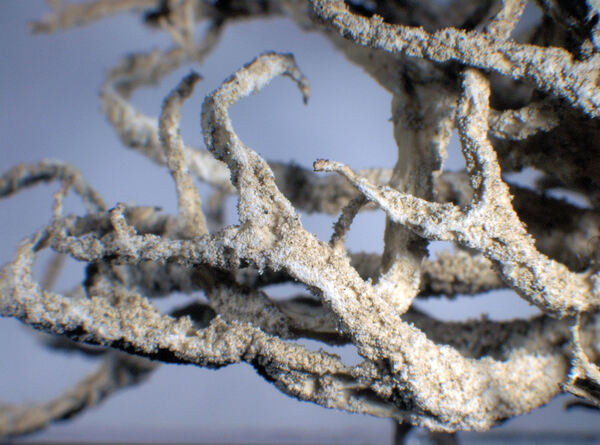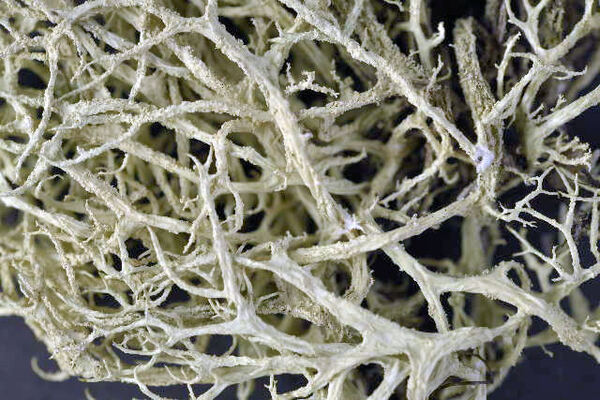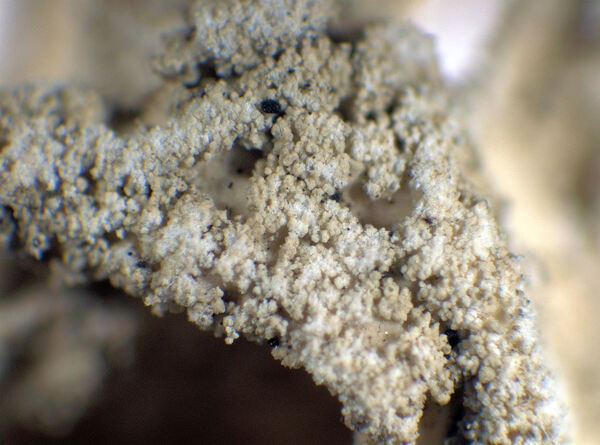Evernia mesomorpha Nyl.
Lichenes Scand.: 74, 1861.
Synonyms: Evernia prunastri var. thamnodes Flot.; Evernia thamnodes (Flot.) Arnold; Letharia mesomorpha (Nyl.) Du Rietz
Distribution: N - Frl, Ven (Nascimbene & Caniglia 2000b, 2002c, 2003c, Nascimbene 2005c, Nascimbene & al. 2006e, Watson 2014), TAA (Caniglia & al. 2002, Nascimbene & Caniglia 2002c, Nascimbene 2003, 2006b, 2008b, 2013, 2014, 2014c, Nascimbene & al. 2005, 2006, 2006e, 2007b, 2014, 2022, Nascimbene & Marini 2015, Nimis & al. 2015, Trindade & al. 2021), Lomb (Nascimbene & al. 2006e, Gheza 2019b), Piem (Isocrono & al. 2004, Morisi 2005), VA (Piervittori & Isocrono 1999, Matteucci & al. 2008, Isocrono & al. 2008, Loppi 2014), Emil - S - Bas (Puntillo & al. 2012).
Description: Thallus fruticose, attached by a basal holdfast, shrubby to subpendulous, up to 8(-10) cm long, irregularly branched, grooved and weakly ridged between grooves, pale greyish green to yellowish green on all sides. Branches with diffuse, granular to subcylindrical, finally sorediate isidia originating from cracks along the ridges. Cortex thin, of anticlinally arranged, small-celled hyphae; medulla white, rather dense, without strands. Apothecia rare, lecanorine, to 6 mm across, with a brown disc and a wrinkled thalline margin. Proper exciple colourless; epithecium brownish, hymenium colourless; paraphyses mostly simple, thick, septate, hypothecium colourless. Asci 8-spored, clavate, the K/I+ blue tholus penetrated by a faintly amyloid apical cushion with parallel or diverging flanks, the wall K/I-, surrounded by a K/I+ blue outer layer, Lecanora-type. Ascospores 1-celled, hyaline, ellipsoid, 8-9 x 5-6 µm. Pycnidia terminal on short lateral branches. Photobiont chlorococcoid. Spot tests: cortex K-, C-, KC+ yellowish, P-; medulla K-, C-, KC-, P-. Chemistry: cortex with usnic acid; medulla with divaricatic acid.
Note: a boreal-montane, circumpolar lichen found on bark (often on twigs) of conifers, sometimes on lignum (e.g. on wooden poles, decorticated branches), with optimum in the subalpine belt; most common in the Alps, but also found in the southern Apennines (Mt. Pollino).
Growth form: Fruticose
Substrata: bark and lignum
Photobiont: green algae other than Trentepohlia
Reproductive strategy: mainly asexual, by soredia, or soredia-like structures (e.g. blastidia)
Subcontinental: restricted to areas with a dry-subcontinental climate (e.g. dry Alpine valleys, parts of Mediterranean Italy)
Commonnes-rarity: (info)
Alpine belt: absent
Subalpine belt: rather rare
Oromediterranean belt: absent
Montane belt: very rare
Submediterranean belt: absent
Padanian area: absent
Humid submediterranean belt: absent
Humid mediterranean belt: absent
Dry mediterranean belt: absent
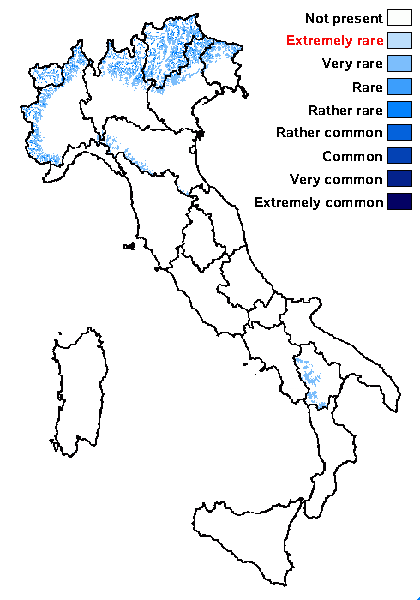
Predictive model
Herbarium samples
Growth form: Fruticose
Substrata: bark and lignum
Photobiont: green algae other than Trentepohlia
Reproductive strategy: mainly asexual, by soredia, or soredia-like structures (e.g. blastidia)
Subcontinental: restricted to areas with a dry-subcontinental climate (e.g. dry Alpine valleys, parts of Mediterranean Italy)
Commonnes-rarity: (info)
Alpine belt: absent
Subalpine belt: rather rare
Oromediterranean belt: absent
Montane belt: very rare
Submediterranean belt: absent
Padanian area: absent
Humid submediterranean belt: absent
Humid mediterranean belt: absent
Dry mediterranean belt: absent

Predictive model
| Herbarium samples |
 INDEX FUNGORUM
INDEX FUNGORUM
 GBIF
GBIF
 DOLICHENS
DOLICHENS
